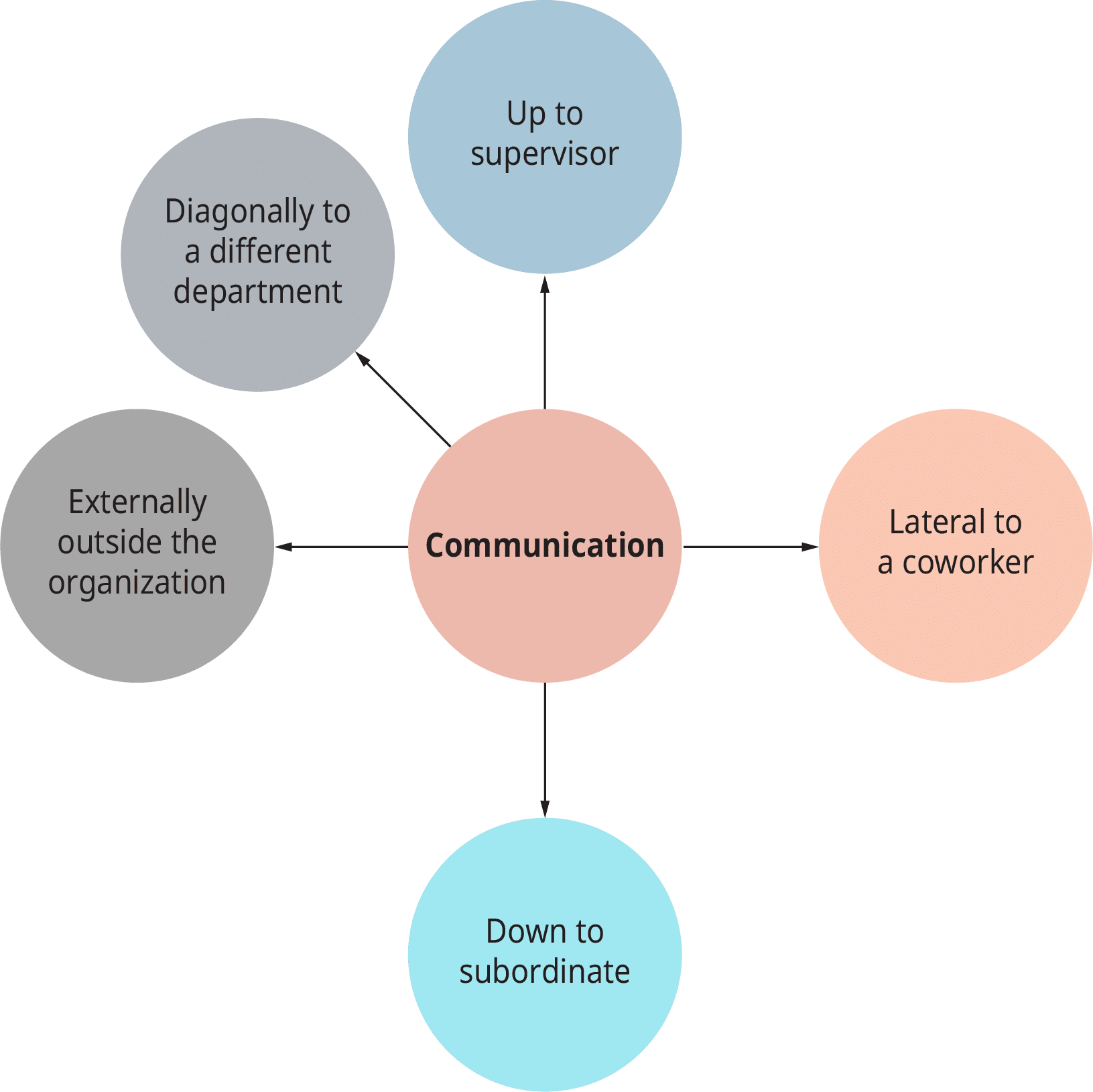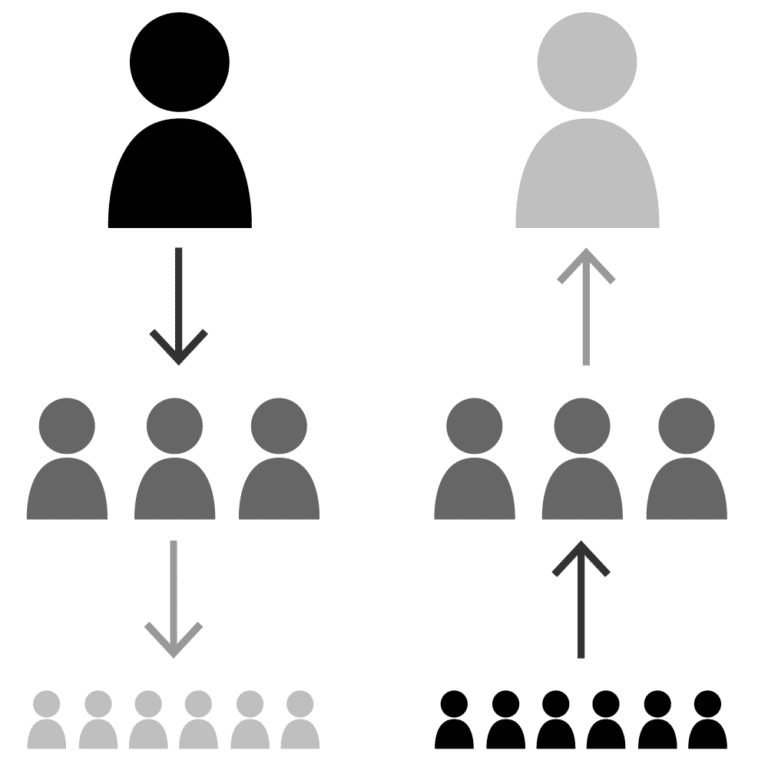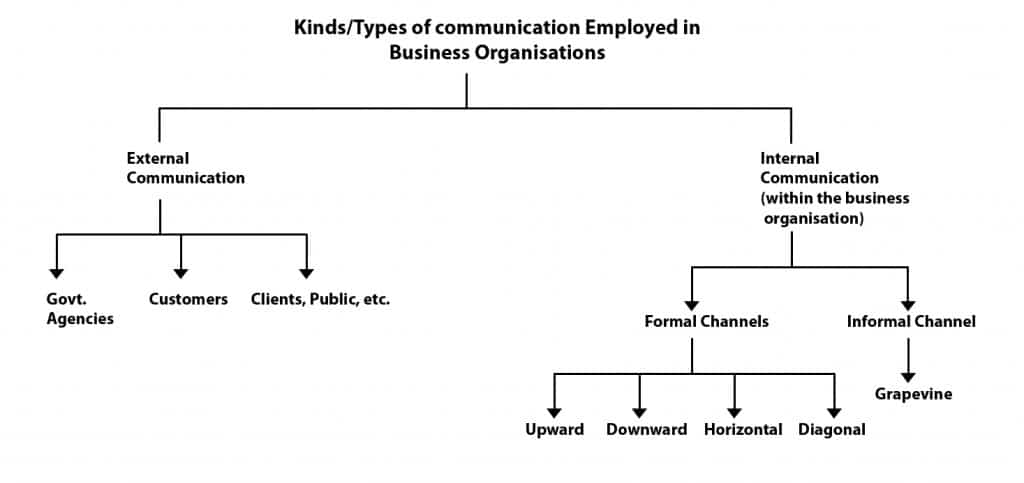Table of Contents
In this article, you’ll learn about Forms of Organizational Communication, Formal and informal communication, Directional communication, Internal and external communication and more.
Organizational culture can be split up into the following four categories:
- Formal and informal communication
- Directional communication
- Internal and external communication
- Oral and written communication
| Forms | INTERNAL | EXTERNAL |
|---|---|---|
| FORMAL | Planned Communication among insiders ( letters, reports, memos, e-mail ) that follows the company’s chain of command.) | Planned communication with outsiders ( letters, reports, memos, speeches, websites, and news releases.) |
| INFORMAL | Casual Communication among employees ( email, face-to-face conversations, and phone calls that do not follow the company’s chain of command. ) | Casual communication with suppliers, customers, investors, and other outsiders ( Face-to-face conversations, email, and phone calls. ) |
And, within each organizational structure, there are a number of subcategories that come into play. Let’s take a look at the main types of communication.

And, within each organizational structure, there are a number of subcategories that come into play. Let’s take a look at the main types of communication.
Formal and informal communication
This category is quite simple. It’s all about the language and tone an organization uses when communicating. Corporate communication calls for the ability to assess what level of formality is required in a particular situation.
Formal communication
Formal communication is often used when communicating with customers and clients, especially during an official press release. Formal communication tends to follow a specific organizational structure, such as mass communication in a carefully crafted email campaign or at a meeting. It may be used in the following circumstances:
- Press releases
- Job offers
- Company-wide emails
The key to formal communication is professionalism. It calls for careful wording and a communication strategy. Strategic communication makes miscommunication unlikely and organizational success likely. However, formal communications can sometimes feel stilted and impersonal.
Informal communication
Informal communication, also known as “grapevine” communication, is equally important, as it is the most common way internal organizational communication occurs. Employees use informal communication to connect with each other to:
- Meet face-to-face in team meetings
- Ask questions over messaging apps
- Share work via email
Many organizations favor informal over formal communication as it can help employees feel more in control of their own workload. However, miscommunication is more likely as informal communication is less strategic. As such, it’s important for organizations regularly using informal communications to have guidelines or employee handbooks for communication practices.
Directional communication

Organizational communication is directional. This means that the way we communicate changes depending on the position of the person we’re talking to. There are three types of directional communication: downward, upward, and horizontal/lateral.
Directional communication—downward
Downward communication refers to an employee communicating with another employee in a lower-ranking position. Downward communication is most commonly used in an instructional sense, such as:
- A supervisor discussing work performance with a frontline employee
- The CEO sending a mass email about upcoming changes
- A manager delegating tasks in a team meeting
In most workplaces, downward communicators will take place via email or messages. However, they can also take place via video call or face-to-face.
Directional communication—upward
Upward communication is the reversal of downward communication. It’s most commonly used in the following workplace situations:
- A frontline employee asking a manager for advice or guidance on a task
- An employee giving feedback to a supervisor or manager
- A frontline employee sharing information with a supervisor
Upward communication is effective because it can help build a more equal workplace. When an organization encourages employees to speak about their experiences to senior management and make suggestions for improvement, it’s likely to see more engaged employees and a boost in productivity.
Directional communication—horizontal
Horizontal communication refers to the communication of employees on the same hierarchical level. It might occur in the following situations:
- A team meeting to share ideas
- An employee asking a colleague for advice or support
- Managers reporting to other managers on the results of their teams’ tasks
Horizontal communications often occur face-to-face. However, with more companies working remotely, employees are needing to find fast and effective ways to communicate through a screen. Communication channels such as team messaging services enable employees to chat horizontally throughout the day, no matter where they’re based.
Internal and external communication
Communication in organizations can also be split into internal and external communication. This refers to the types of people employees communicate with.

Internal communication
Internal communications focus on the way employees interact with one another. This workplace communication may involve the following:
- Professional collaboration via numerous communication channels such as video, email or live chat
- Employee training modules such as decision-making courses or two-way reviews
- Messaging around an organization’s mission
- Interpersonal communications between management and employees
- Workplace social activities
Internal communication focuses on employee engagement and employee communication. Businesses need to ensure that employees can bond and make effective professional connections. This can be more challenging for large organizations or those that encourage employees to work from anywhere.
External communication
External communication applies to the way an organization communicates with the outside world. This includes:
- Public relations announcements, for example by social media, TV, or radio
- Marketing materials
- Branding of products or services
- Job posts and hiring, including LinkedIn adverts or recruitment drives
- Communication with stakeholders
- Customer support
External communication is important for building a brand, as well as maintaining strong customer relationships. There should be an overarching tone to all external communication in order to show a cohesive organizational image. It needs to fit with the organization’s mission, ethics, and industry. Additionally, having clear guidelines on how to communicate with customers ensures a consistent, high-quality customer experience.
Oral and written communication
The final category when analyzing organizational communication is oral and written communication. Both types are used regularly and play a big role in organizational success.
Oral communication
Oral (spoken) communication is important. It’s the way a person communicates face-to-face to their colleagues, employees, or customers. Interpersonal communication relies on body language, eye contact, and gestures, as well as the words being said. An employee may use oral communication in a one-to-one session, a small group meeting, or in front of a large crowd of people. As such, oral communication helps us to form stronger relationships and build trust.
Remote working can mean that oral communication is more challenging. But, considering its importance in building and maintaining professional relationships, it’s still necessary. Many organizations rely on video calling to ensure that teams can stay connected and have interpersonal communication.
Written communication
Written communication is also important when running a business. It occurs via email, instant messages, and social media, and can be both formal and informal.
There are a number of benefits to written communication over oral communication. For example, an employee has more time to think of their response and ensure it adheres to the company guidelines. Written communication is less impulsive and therefore can be more strategic.
However, written communication can also have its drawbacks. It can be more difficult to portray the company’s personality, and organizations risk losing a tone of voice if the written communication is shared among many members of staff. This is where a handbook is useful.
